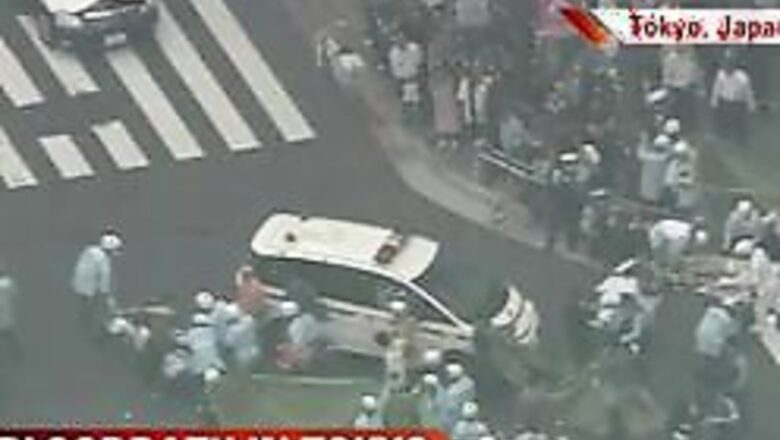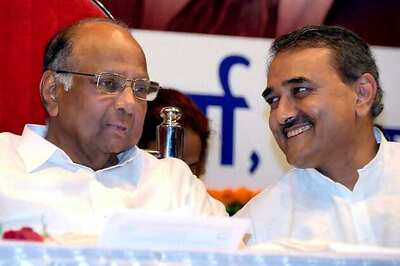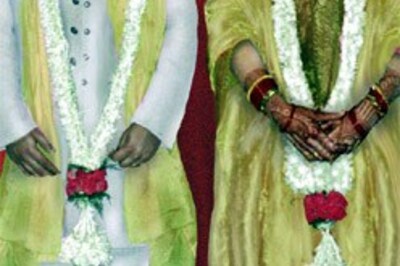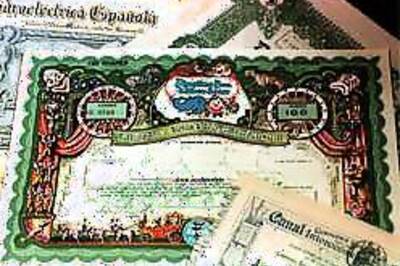
views
Tokyo: Japan struggled to make sense Monday of a stabbing rampage that killed seven people at the center of Tokyo's comic book and ''anime'' youth culture, as local reports uncovered messages showing the troubled attacker detailed his plan in advance on the Internet.
Mourners, some weeping, piled ''manga'' comics, flowers and other items in honor of the dead at the intersection in the Akihabara district where a man on Sunday rammed pedestrians with a rental truck, then jumped out swinging a dagger, leaving 17 victims bleeding in the street.
Police arrested blood-splattered 25-year-old Tomohiro Kato, a temporary worker at a factory outside Tokyo, and media reports and Internet sites buzzed Monday with a series of messages he allegedly posted to an electronic bulletin board via cell phone in the hours before the slaughter.
Authorities confirmed that Kato told them he had posted messages and that they were verifying their authenticity, but did not release details. Media reports and Internet accounts by people claiming to have viewed the postings, however, said he chronicled his steps up to just minutes before the attack.
In a message thread titled, ''I will kill people in Akihabara,'' Kato allegedly wrote: ''I want to crash the vehicle and, if it becomes useless, I will then use a knife. Goodbye, everyone,'' the reports in newspapers and national broadcaster NHK said.
That was followed chillingly several hours later, the reports said, by a message sent just 20 minutes before the truck crash from Akihabara via cell phone that read, ''It's time.''
For many Japanese who grew up convinced their nation was safe, the first reaction was shock.
''It's unbelievable that things like this are happening in our country,'' 19-year-old Tsutsumo Hirano, who attended high school with one of the victims, said as he paid his respects at the memorial at the attack site.
The government Monday vowed to impose greater controls on access and possession of large knives like the one used on Sunday, while taking steps to provide better security for crowded public places.
Japanese grappled with possible explanations for the attack, the latest in a string of bloody assaults in recent years. Some speculated that the growing gap between rich and poor was spurring rage among have-nots like Kato; others said Japan has become a lonelier place in recent years.
''The group mentality has given away to individuality in Japan,'' said Nobuo Komiya, a criminologist at Rissho University in Tokyo. ''This is fine for people who can deal with their problems on their own, but not for those who need someone to talk and listen.''
Kato was clearly troubled. Last week, he suddenly lost control of his temper at his factory in Shizuoka, about 150 kilometers (100 miles) southwest of Tokyo, where he had worked since November, said company executive Osamu Namai.
''He was screaming that his uniform was missing. When his colleague got a new uniform for him, he had already left and never returned,'' Namai told reporters. NHK interviewed an anonymous work colleague who said Kato went into a rage, kicking lockers and throwing uniforms.
The attack was a blow to Akihabara, once a low-cost electrical supply district that has grown over the past 15 years into Tokyo's premier computer and youth culture center, with everything from huge multistory electronics emporiums to tiny cafes where youths read comicbooks or converse with hostesses dressed as popular animation characters.
Kato, like many Japanese young people, shared this fascination with anime. In a page from his junior high school yearbook published by Yomiuri newspaper Monday, he had made a drawing of his favorite video game character holding a dagger. He wrote in English, ''Personality Crooked,'' the report said.
There was no apparent evidence, however, linking those interests to the killing. He reportedly went to Akihabara for the attack because its main streets are closed to cars and open to large numbers of pedestrians on Sundays.
Aside from the makeshift memorial, shopkeepers and workers in Akihabara went about their business as usual Monday. Just behind the memorial was a large electronics store, where a massive TV set flashed advertisements down into the street.
Employees inside the store refused to say anything about the killing spree, and customers browsed the aisles. As the early rain eased off later in the day, a separate, smaller pile of flowers and soft drink offerings for the dead appeared in front of a nearby McDonald's.
''There are a lot of reporters asking questions,'' said Kiyotaka Aoki, an employee for mobile phone provider Softbank, who sells phones across the street from where the crimes took place. ''But other than that, things are totally normal.''
Sunday's killings were the latest in a string of troublig attacks in Japan.
In March, one person was stabbed to death and at least seven others were hurt by a man who went on a slashing spree with two knives outside a shopping mall in eastern Japan. In January, a 16-year-old boy attacked five people in a shopping area, injuring two of them.
A spate of knife attacks also have occurred in schools, the worst on June 8, 2001, when a man with a history of mental illness burst into elementary school near Osaka, killing eight children. He was executed in 2004.


















Comments
0 comment